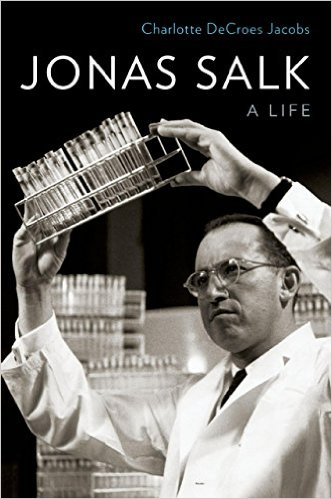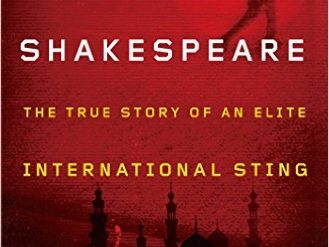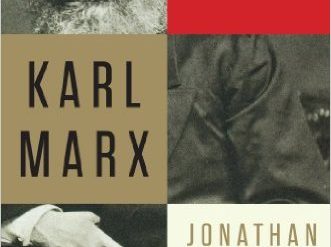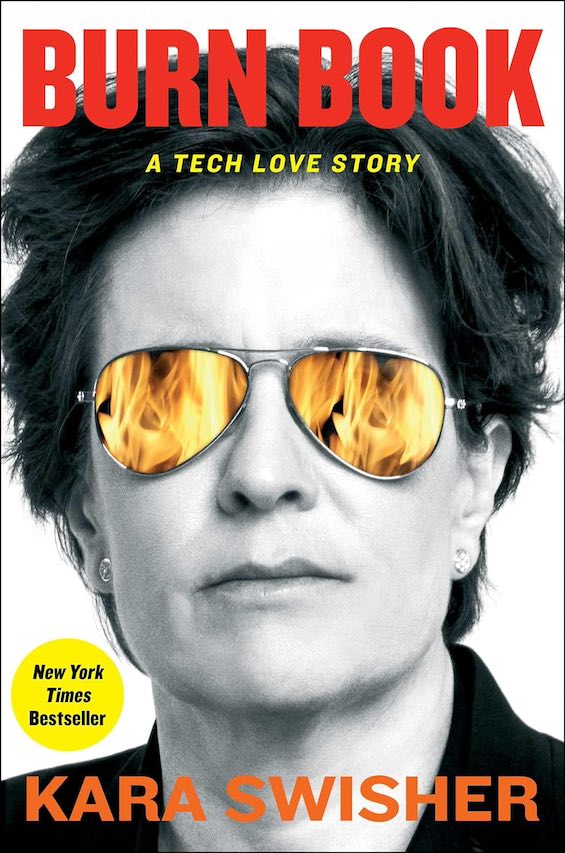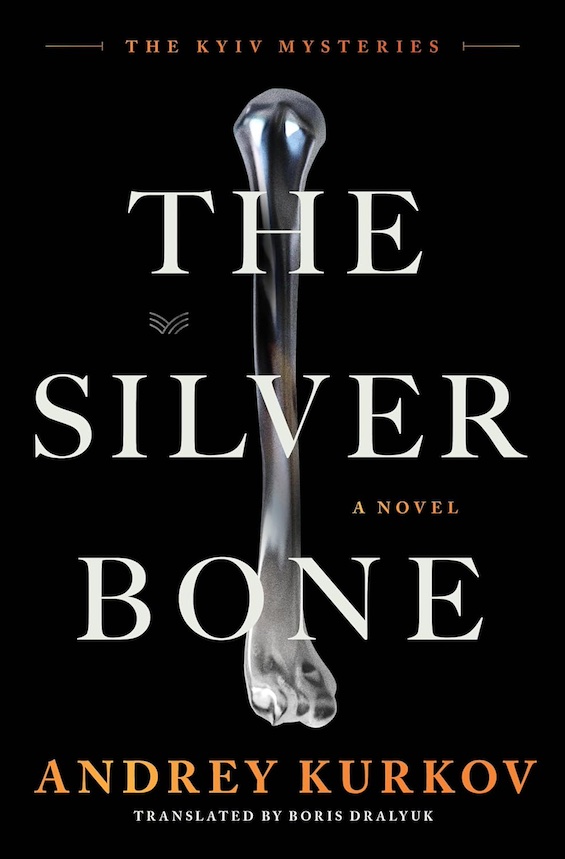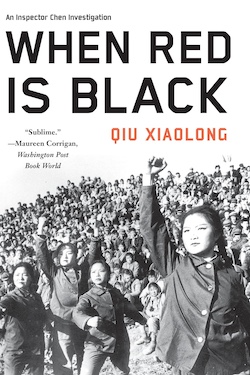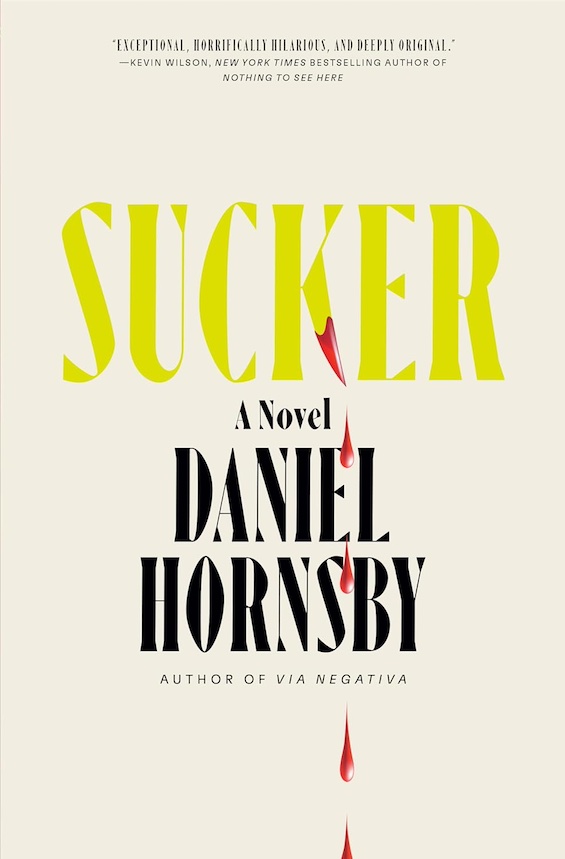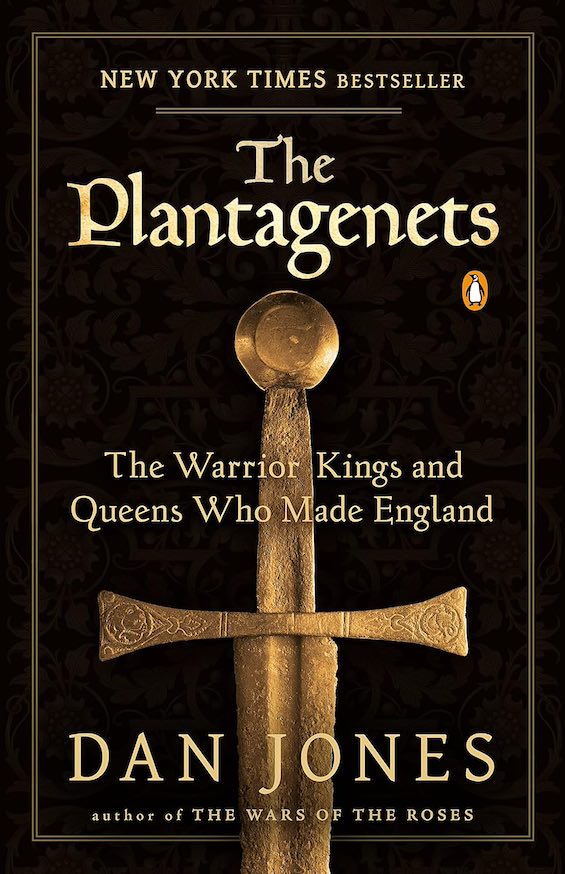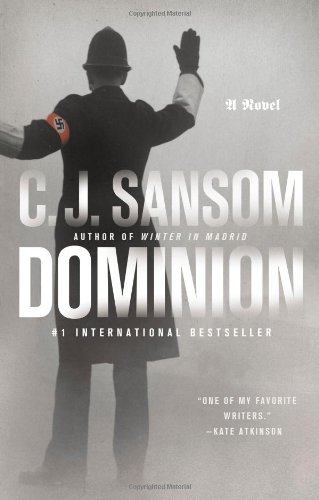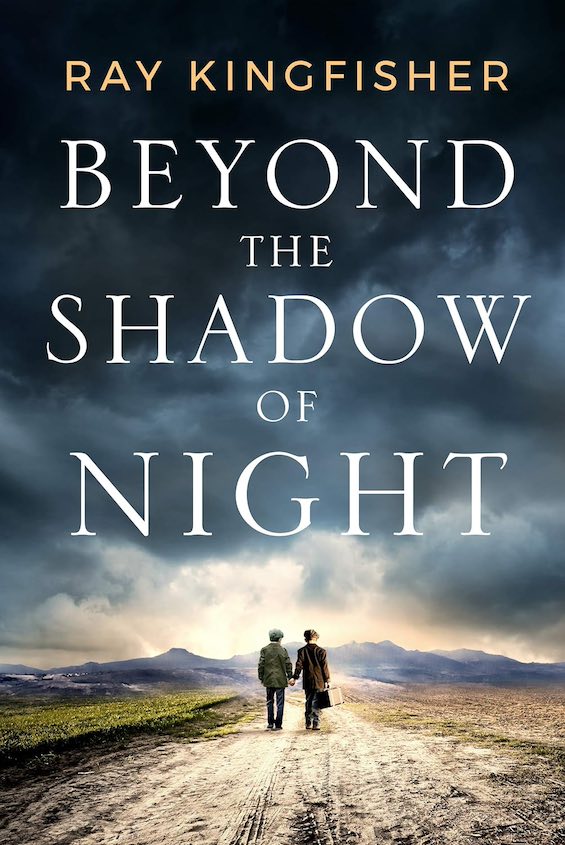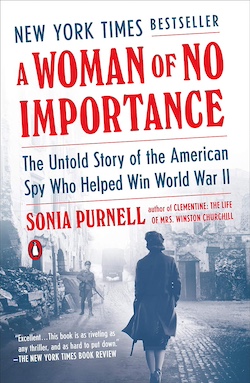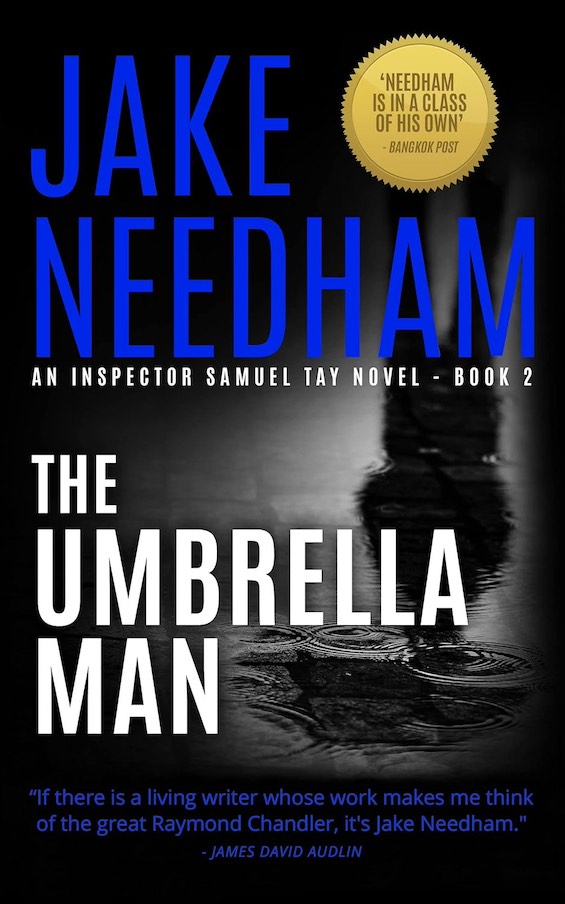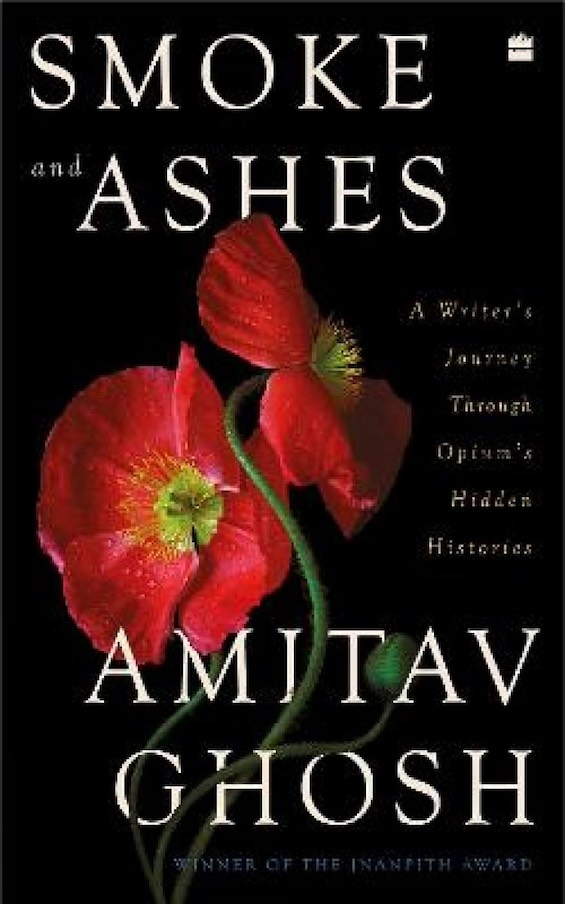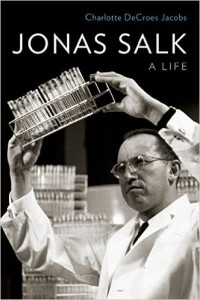
No one born after about 1950 is likely to have any living memory of the abject fear that seized hold of the American psyche under the annual threat of polio. But I remember.
Early in the 1950s, as polio steadily grew more prevalent with every succeeding summer, I grew from childhood into adolescence, prime years for susceptibility to what was more properly (though misleadingly) called infantile paralysis. Most of my friends chafed under the near-hysteria of their parents, but my father was a doctor: there was no hysteria in our household. Instead, I was quickly spirited out of town to rural summer camps where polio was rare.
Estimated reading time: 6 minutes
Then, with hope rising as a result of increasingly more optimistic field tests beginning in 1953, headlines around the world finally blared in the spring of 1955, “Polio is Defeated!” A young doctor, barely more than forty years old, had developed a safe and effective vaccine with financial support exclusively from what was popularly known as the March of Dimes. (That organization was very different from its successor today, which focuses on premature birth and birth defects.)
Salk become an instant global star. In many communities, the celebrations that ensued rivaled those that capped the victories in World War II. The doctor’s now well-known name was Jonas Salk. Now, Charlotte DeCroes Jacobs, both a physician and a biographer, has written what may be the definitive story of the man’s life. It’s an outstanding piece of work, and an eye-opener.
Jonas Salk: A Life by Charlotte DeCroes Jacobs ★★★★★
The polio wars: Jonas Salk vs. Albert Sabin
Salk’s vaccine, technically a “killed virus vaccine” administered by injection, came into existence only because Salk used an unconventional approach and doggedly persevered in his research despite the loud protestations of other virologists. Most prominent among the chorus of naysayers was Albert Sabin, a rival researcher whose oral “live virus vaccine” against polio came into wide use only in the 1960s.
Even after an enormous field test proved Salk’s vaccine to be both safe and effective, Sabin and others continued to insist loudly that a killed virus vaccine was dangerous and should not be administered. This led the FDA to call a temporary halt to the administration of the vaccine. Later, it also came to be reflected in the adoption by the U.S. government of the oral vaccine as the sole option offered in the United States. For a number of years, the Salk variant was no longer even manufactured in the U.S.
The incidence of polio dropped by 97%
Nonetheless, from 1955 until 1961, Salk’s vaccine reduced the incidence of polio in the United States by ninety-seven percent. In Sweden and Finland, where it was fully adopted, the vaccine totally eliminated polio. Despite this near-flawless record Sabin and others continued to object to the use of Salk’s formulation. When Sabin’s rival vaccine was put into wide use, dozens of Americans eventually contracted paralytic polio as a result, exactly as Salk had predicted. Only years later, once Salk had perfected a more advanced formulation of the killed virus vaccine, was it offered as an option in the United States.
Sabin never acknowledged in any way the damage his vaccine had done, and for the rest of his life continued to undermine Salk in scientific circles, as did a number of other prominent researchers. Though idolized in the press and among the public, Salk was virtually a pariah in the scientific community, at least in part because the press had made him a celebrity. (Clearly, his unpopularity within the scientific establishment was also a result of his insistence on working in his own way, without regard for others’ views.) He was essentially blackballed in the Nobel committee and was never admitted to membership in the prestigious National Academy of Sciences.
Influenza, multiple sclerosis, and AIDS
Polio was only one of several diseases Jonas Salk investigated. Barely out of medical school, he and his mentor produced the first influenza vaccine in 1938. His search for a cure for MS showed great promise in the eyes of neurologists, who found his contributions significant, but was denigrated by many of the same virologists who seemed to disapprove of everything he did. Unfortunately, that research ended prematurely when his patron at the National MS Society suddenly died. Salk had many talents, but fundraising wasn’t one of them.
Then, in the 1980s, Salk played a major role in research on AIDS. Early on, he took upon himself to negotiate a compromise between the French and American doctors who both claimed to have first identified HIV. It took two years but finally he succeeded, making possible collaborations that might well otherwise have been out of the question. Then he turned his attention to the development of a vaccine against HIV.
His work was bitterly criticized
Once again, his work was bitterly criticized — because he insisted on taking an unconventional approach. The prevailing wisdom was that a vaccine could only be developed on the basis of one portion of the HIV molecule; Salk insisted on using the whole molecule, which subjected him to ridicule for having ignored recent advances in medical research. However, he was proven right again.
Initial trials of his vaccine showed promise and those developed by his critics utterly failed, but the criticism didn’t stop. It never stopped. (No successful AIDS vaccine has ever been developed, despite many promising starts. Research has focused largely on treatment to slow or prevent the progression of the disease.) Sabin continued to bad-mouth Salk at every opportunity — at scientific conferences, in science journals, and in Congressional testimony — until the end of his life. Salk’s forbearance, and his refusal to answer Sabin in kind, was legendary.
Founding the Salk Institute
He didn’t want to name it after himself. The scientific research center he founded in La Jolla, California, in 1960, came to be named the Salk Institute only because the principal fundraiser insisted that he could only raise the necessary money if Salk’s name were attached. In fact, throughout his life, Salk was generally soft-spoken, self-effacing, and unpretentious. He was horrified that the polio vaccine he developed came to be known popularly as the “Salk vaccine.” Whenever possible, he shunned publicity; unfortunately, that was rarely possible.
Salk was, in a word, a nice guy. Expecting him to be cold and uncaring, his teachers in medical school and, later, in his residency discovered that he was solicitous and sensitive in his dealings with patients. And he almost never replied in kind to any of the criticism directed toward him in the scientific community. However, his personal life was marred in several ways: his single-minded devotion to his work caused him to neglect his wife and three sons, and, later in life, before and during his second marriage, he appears to have had numerous affairs.
About the author
Charlotte DeCroes Jacobs, M.D., is an Emerita Professor of Medicine at Stanford. There, she engaged in cancer research and served as Director of the Clinical Cancer Center. Jonas Salk is her second medical biography, following Henry Kaplan and the Story of Hodgkin’s Disease. An award-winner both for her work in medicine as well as her writing, Jacobs has also been honored for her acting and singing.
For related reading
This is one of the Best books about innovation reviewed here.
Like to read good biography? Check out 10 great biographies.
If you enjoy reading nonfiction in general, you might also enjoy:
- Science explained in 10 excellent popular books
- My 10 favorite books about business history
- Top 10 nonfiction books about politics
And you can always find my most popular reviews, and the most recent ones, on the Home Page.

